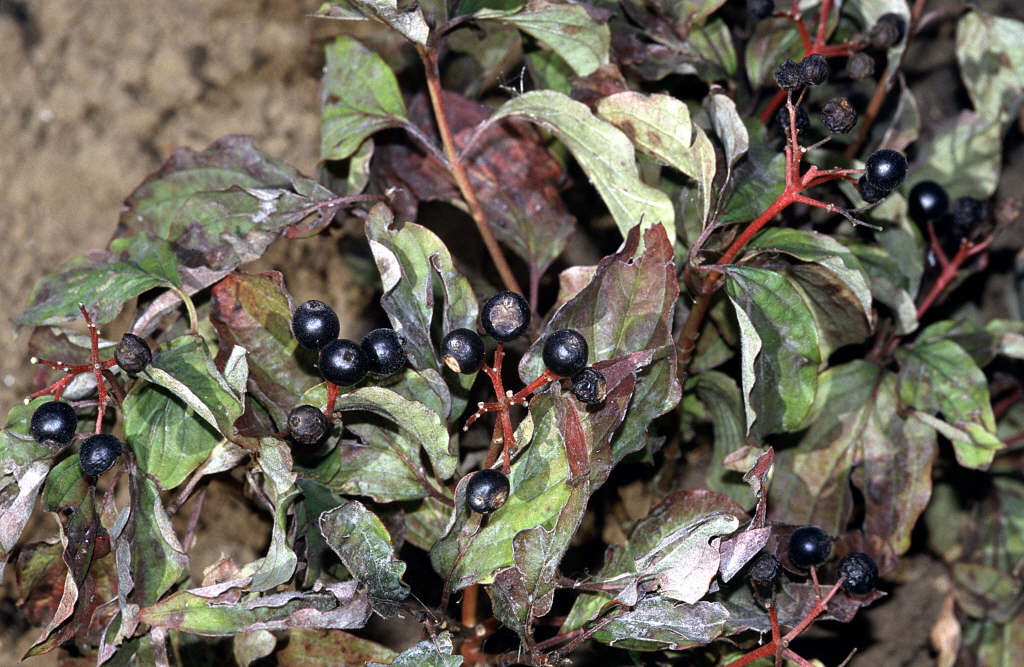Cornus sanguinea
common dogwood
Deciduous shrub about 3m tall, of upright habit, with young shoots reddish-green in winter, ovate mid-green leaves turning deep red in autumn, and in summer, small white flowers in flat clusters, followed by black berries
Other common names
blood twigcatteridge tree
see morecommon cornel
dog cherry
dog tree
dogberry
gadrise
gattar tree
gatten tree
houndberry tree
pegwood
prick timber
prickwood
skewer wood
swamp dogwood
cwyros
Size
Ultimate height
1.5–2.5 metresTime to ultimate height
5–10 yearsUltimate spread
1.5–2.5 metresGrowing conditions
Moisture
Moist but well–drained, Well–drainedpH
Acid, Alkaline, NeutralColour & scent
| Stem | Flower | Foliage | Fruit | |
| Spring | Green | |||
|---|---|---|---|---|
| Summer | White | Green | ||
| Autumn | Red | Black | ||
| Winter | Red |
Position
- Full sun
- Partial shade
Aspect
South–facing or North–facing or West–facing or East–facing
Exposure
Exposed or Sheltered Hardiness
H6Botanical details
- Family
- Cornaceae
- Native to GB / Ireland
- Yes
- Foliage
- Deciduous
- Habit
- Bushy
- Genus
Cornus can be deciduous shrubs or trees, or creeping, woody-based perennials, some with brightly coloured young stems. Tiny flowers are borne in dense clusters, sometimes with showy bracts. Many have fine autumn colour
- Name status
Correct
- Plant range
- Europe
How to grow
Cultivation
Will grow in most soil conditions in sun or partial shade. For more information see winter stem colour cultivation or flowering dogwood cultivation
Propagation
Propagate by seed or hardwood cuttings
Suggested planting locations and garden types
- Cottage and informal garden
- Wildflower meadow
- Wildlife gardens
- Flower borders and beds
- Hedging and screens
Pruning
Pests
Generally pest-free but may be susceptible to horse chestnut scale
Diseases
May be susceptible to cornus anthracnose and honey fungus
Get involved
The Royal Horticultural Society is the UK’s leading gardening charity. We aim to enrich everyone’s life through plants, and make the UK a greener and more beautiful place.
